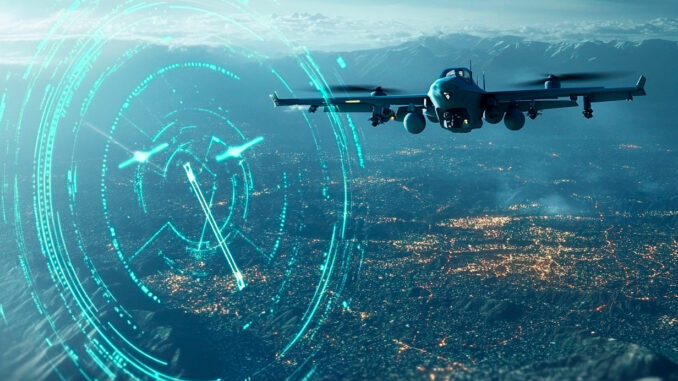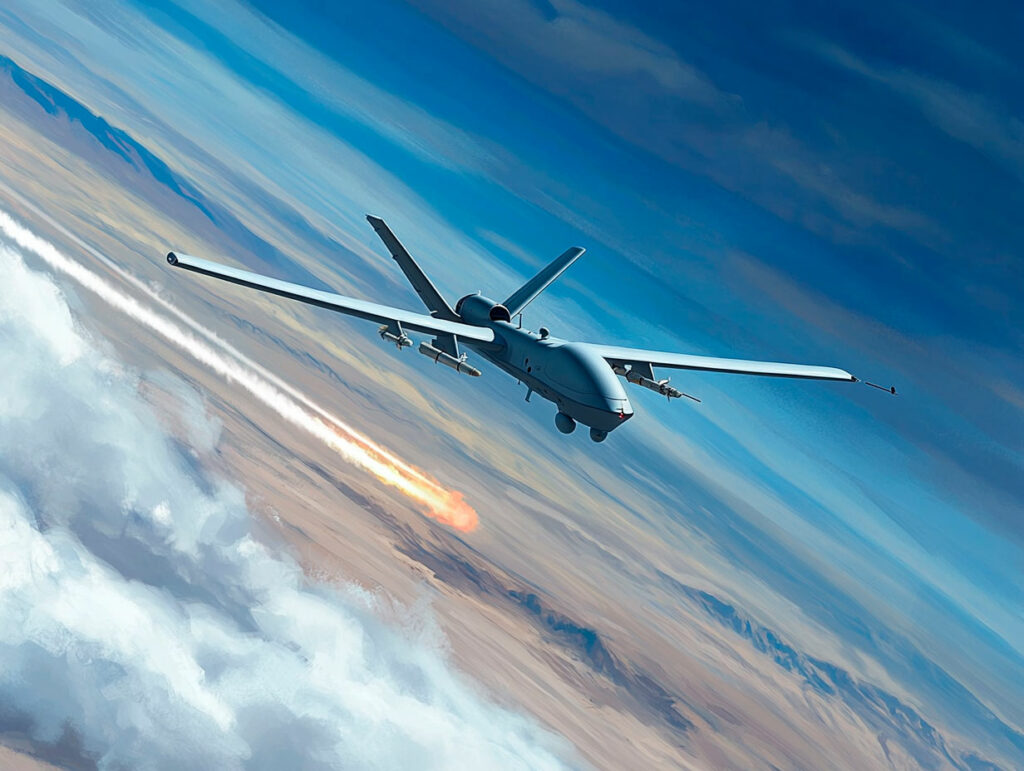
Russia is introducing a mobile anti-drone laser system to counter the growing threat of drones in modern warfare.
Russia has recently developed a mobile laser system designed to neutralize small drones. This system, consisting of two vehicles, combines detection radar and a laser weapon with optical tracking. Designed to destroy commercial drones at short range, it reflects the evolution of military strategies in the face of the proliferation of drones in current conflicts.
The Russian mobile laser system
Russia has developed a new mobile anti-drone system equipped with a laser weapon, aimed at countering the growing threat of unmanned aerial systems. This development is part of an approach to modernize defense capabilities in the face of the increased use of drones in contemporary conflicts.

The technical characteristics of the system
The mobile complex consists of two separate vehicles:
- Radar detection vehicle: Equipped with an advanced radar system, it detects and tracks target drones.
- Laser-armed vehicle: Equipped with a laser weapon coupled with an optical tracking system, it is responsible for neutralizing identified drones.
The precise technical specifications have not been disclosed, but observations suggest that the laser is of moderate power, suitable for the neutralization of small drones at limited distances.
Demonstration and operational capabilities
According to Russian media reports, the system was presented to Dmitry Medvedev, vice-president of the Russian Security Council. During this demonstration, the laser weapon destroyed a small fixed-wing drone using a directed energy beam. The images released show the laser targeting and shooting down a light drone at close range.
Background: the growing importance of drones in modern warfare
Drones are playing an increasingly crucial role in reconnaissance and attack missions. For example, the Bayraktar TB2, used by Ukraine, has proven its effectiveness by destroying several Russian vehicles, including surface-to-air missile systems. This intensive use of drones has highlighted certain vulnerabilities of conventional armies in the face of these aerial threats.
The logistical advantages of directed energy weapons
Directed energy technologies, such as lasers, offer several logistical advantages:
- Lower cost per shot: Unlike traditional missiles, laser shots have a marginal cost, allowing for significant savings.
- Unlimited ammunition: As long as the system has sufficient power, it can fire indefinitely, eliminating the constraints associated with replenishing ammunition.
These advantages make laser systems particularly suitable for anti-drone missions, where the number of targets can be high.

The limitations of laser systems
Despite their advantages, laser systems have certain limitations:
- Limited range: Atmospheric conditions such as rain, fog or dust can reduce the laser’s effectiveness, limiting its operational range.
- Power required: Neutralizing larger or better-protected drones requires higher-powered lasers, which can increase the complexity and cost of the system.
These challenges require continuous research to improve the performance and adaptability of directed energy weapons.
Strategic consequences and future prospects
The introduction of mobile laser systems by Russia could have several strategic implications:
- Adaptation of opposing tactics: Opposing forces could develop drones with specific countermeasures or modify their tactics to reduce the effectiveness of lasers.
- Technological arms race: This development could encourage other nations to accelerate their own directed energy weapons programs, intensifying technological competition in the military domain.
In the future, the integration of these systems could transform air defense doctrines, with an emphasis on the rapid neutralization of low-cost airborne threats.
Russia’s development of a mobile anti-drone laser system reflects a significant evolution in modern defense strategies. In response to the proliferation of drones on the battlefield, these technologies offer potential solutions for effectively neutralizing airborne threats. However, technical challenges remain, and their success will depend on the ability to overcome current limitations and adapt to evolving threats.
War Wings Daily is an independant magazine.